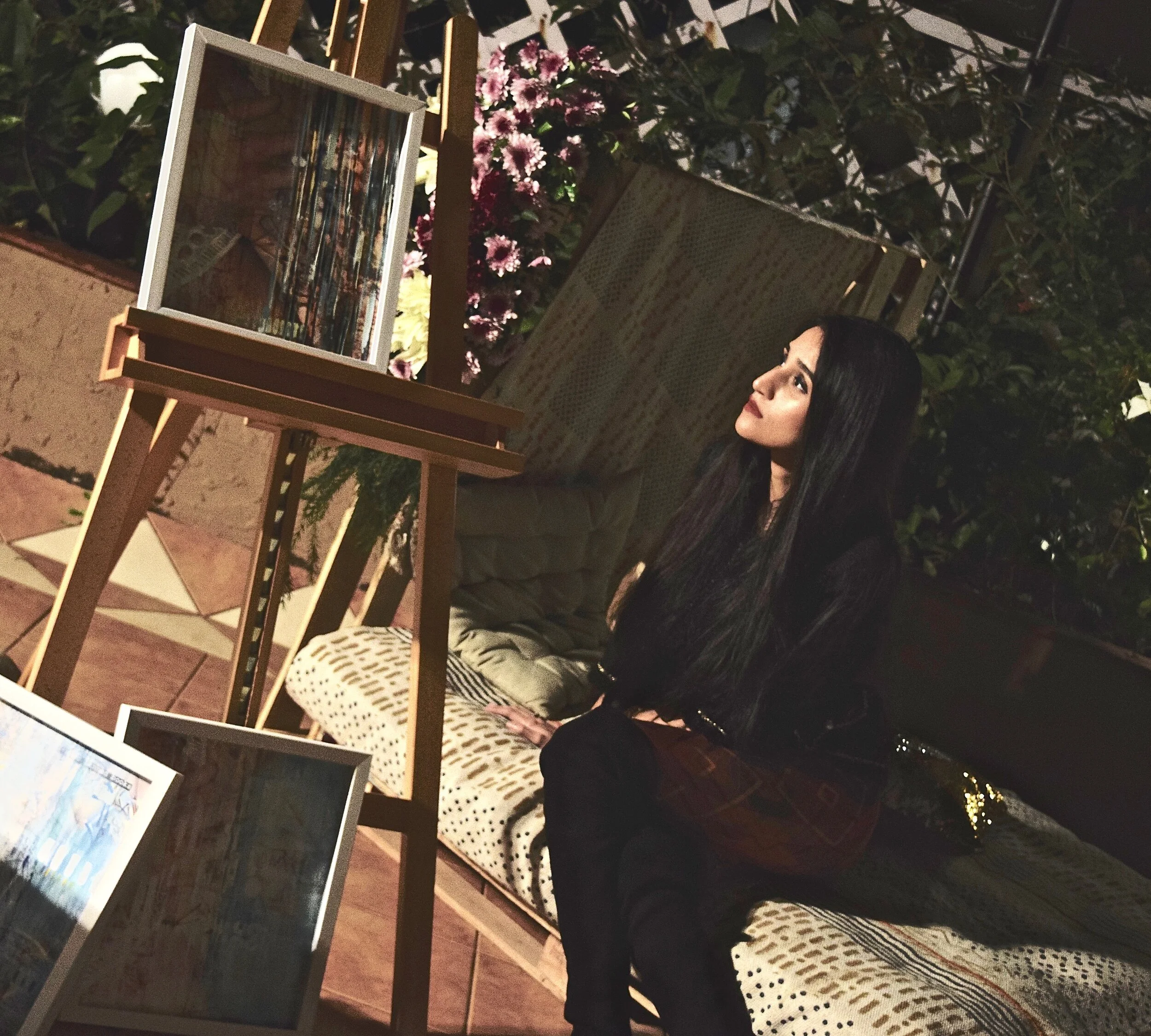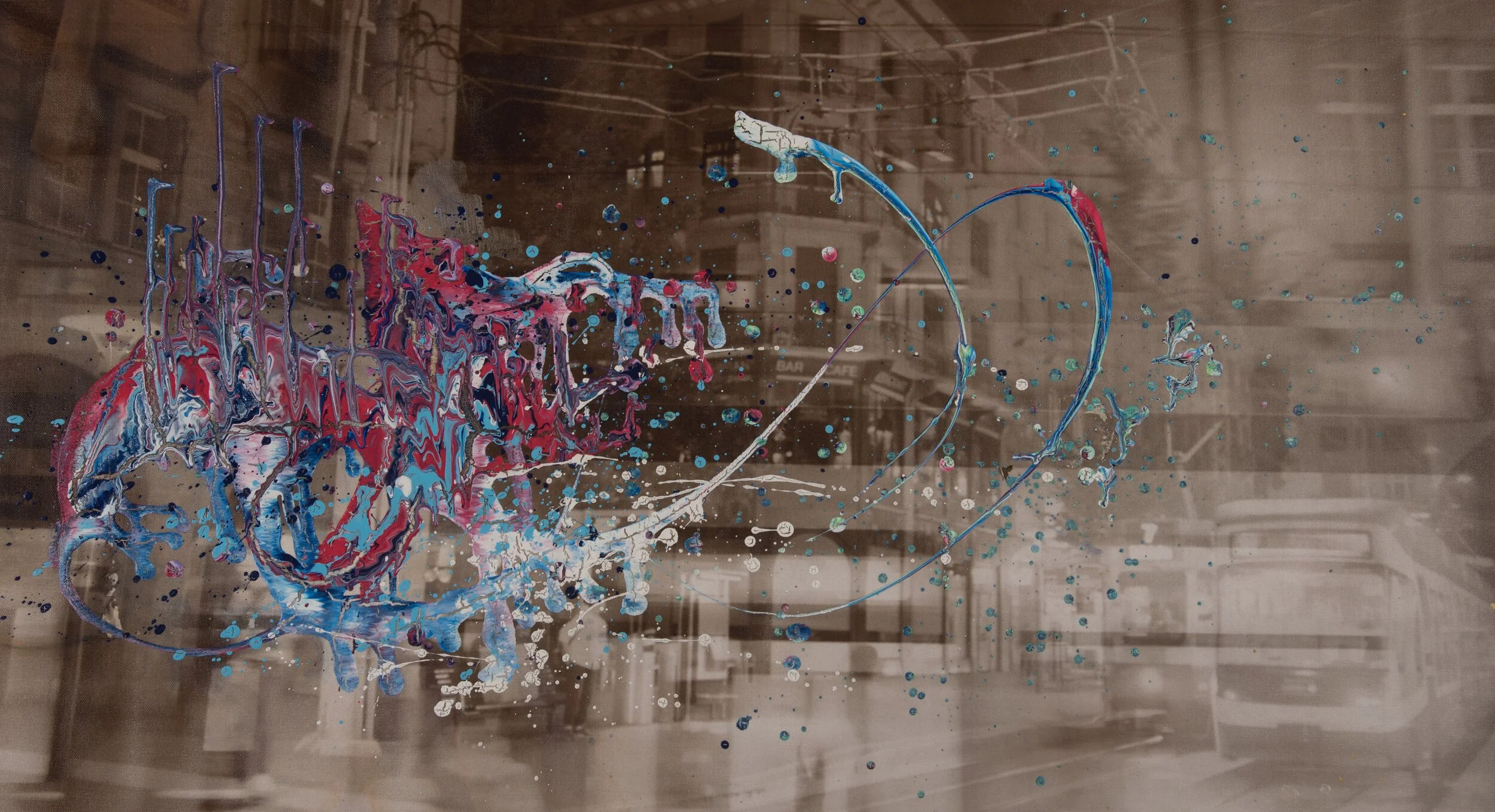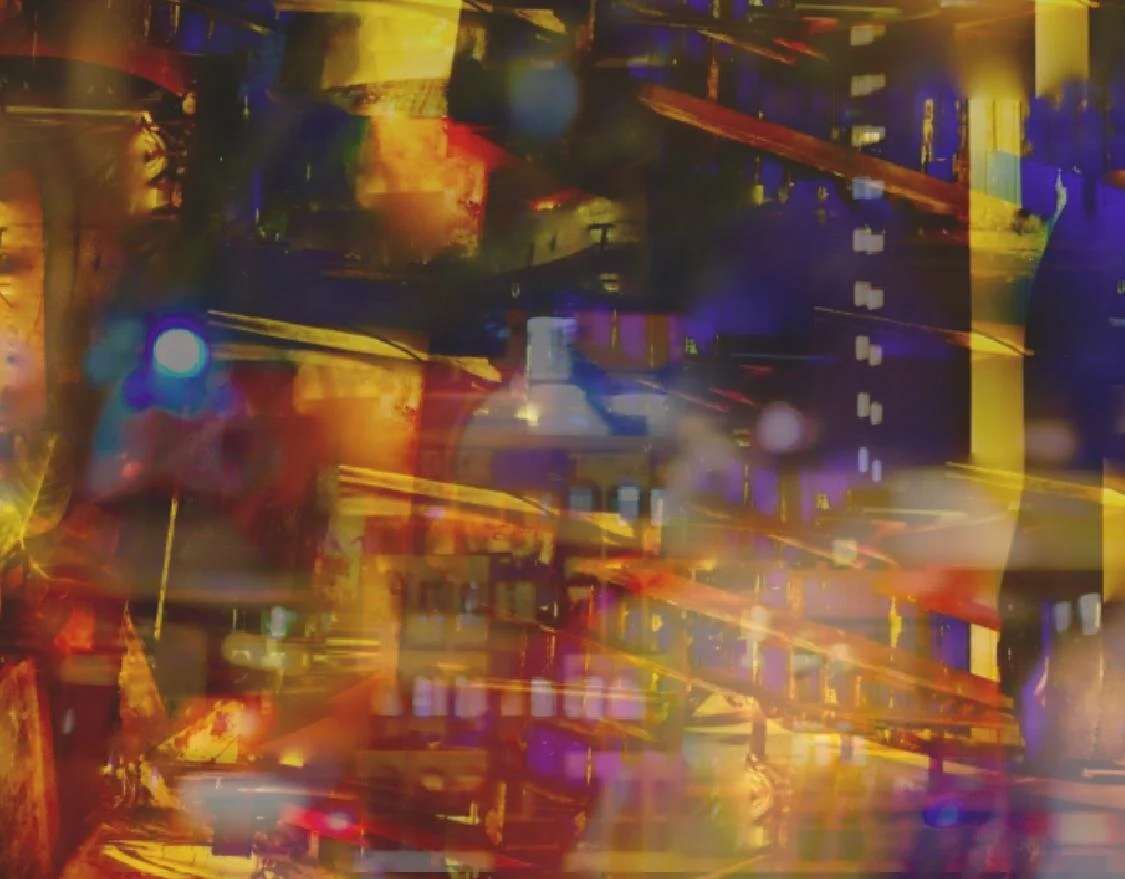A Studio in Lockdown
Akshita Gandhi
For the past few years, Akshita Gandhi has investigated themes of astral travel, time, and space in her work. We sat down with her to discuss her studio practice amidst the pandemic, which is increasingly uncontrollable in her home city, Mumbai. With less space, Gandhi still makes it work, finding new ways to develop her practice in the digital sphere.
Akshita Gandhi’s work is on view in two virtual exhibitions Traveling Souls, curated by Anna Mikaela Ekstrand, and Architecture of the Elsewhere curated by Bianca Boragi.
Akshita Gandhi in Conversation with Anna Mikaela Ekstrand
Anna Mikaela Ekstrand: What does your studio look like right now, is it messy or tidy, do you have multiple projects going on at once, is it a place where you store finished works? And, perhaps more importantly, how does your studio make you feel?
Akshita Gandhi: With the lockdown that has been imposed by the current pandemic, I am working out of my apartment. I have converted a small room into my workspace and besides a chest of drawers where I store half my art materials, there is nothing in the room and it is tidy. I am working on a project titled, “Time et Space” and am working on two canvases simultaneously. Some of my finished artworks are rolled up canvases and stored in the corners of my living room and some of them are framed and hung up on the wall. I rotate the artworks that I hang on the wall every other month just to see how some of them feel, it gives me a sense of understanding my own work better. My studio makes me feel “zen.” The plain white walls without any furniture or obstruction help me fathom what my project will look and feel like. There is no distraction, there is no reference, there is no previous work with which I can compare the artwork I work on in my studio and I have grown to love that. My actual studio is vibrant with finished works stored everywhere and tons of art books I use for references and a hundred different kinds of mediums. In my current space, I only take the materials I am currently working on and using.
Akshita Gandhi
Traveling Souls, 2020
12 x 9.36 in. Print on canvas
AM: The pandemic brought on hyper-awareness to our own and others’ domestic spaces. Conversely, we forgot, romanticized, or revived - in memory - places that we could not visit. The virtual exhibition Traveling Souls, which I curated, was a dialog between yourself and the poet Anukrti Upadhyay, presenting works conceived in response to the start of the monsoon season in Mumbai. A normally bustling time when Mumbaiites revel in their city, at the time subdued by the pandemic. To prepare for the exhibition, you spent time researching time, space, and astral travel. Which ideas are you intrigued by and how do they enter into your work?
AG: Traveling Souls was a special show because of how relevant it was to the people of this city last year when the lockdown was extremely strict and we were confined to our homes for over four months and the monsoon season is a symbolic time for all of us. I have been researching the ideas of time, astral travel, and space since 2019 when I was exhibiting in New York and spent evenings in the public library reading as much as I could and found the concepts so powerful. I am currently working on photographs taken of Mumbai and Zurich before the world was tainted by this pandemic, which are printed on canvas and am using pour paint over it to cover parts of it and am ripping parts of the pour paint out to show the difference between what the canvas looks like, metaphorically speaking, what the “new normal” looks like. After a few layers, the parts of the paint that are ripped out leave the canvas looking distorted, the bright vibrant, jubilant colors have a fantasy, dreamlike feeling representing all that is fantastical, fictional, utopian, which represents time on the canvas. Space remains as is however, it is how time has affected the space that the pieces depict.
AM: You have a multi-media practice: you work with paint and photography, sometimes merging the two, sculpture, installation, and poetry. How do you move between mediums?
AG: The process usually begins with a story to tell and depending on the story the mediums work seamlessly hand in hand to narrate it. I always begin with 2D work and then figure a way to translate those into 3D, body immersive works with the focus fixed on the theme of the project. For instance when I was creating a sculpture for my show with the Foley Gallery, New York in 2019 I had a vision of how I wanted to create “wings” for my theme, “Let there be light” but in 2D created a painting that lacked depth because I wanted them to look lousy cause of how the aesthetic needed to be. It was only in the sculpture that I could really express my vision and give my idea shape. Every medium has its own advantage and reason why it works and how you can shift between mediums to fully create and give shape to what you want to create and the way it needs to look from a personal “artist’s” point of view.
Akshita Gandhi
When Charlie Married the Chocolate Factory, 2020
Fluid and acrylic paint on printed canvas.
AM: You have worked with two designers, Kurtees and Frank DeBourge, how was it working creatively with them? In what ways, if any, did you translate your work to fit the field of fashion?
AG: As an artist I believe art is everywhere and definitely extends beyond canvases. Both my collaborations were mighty exciting. With Frank and Kurtees I used my prints on their garments as a limited edition collection. With Frank we worked on his leather jackets and it was interesting to use the artwork from my series, “Let there be light” and with Kurtees I used several works from the series, “Freedom; I read banned books.” To see how the different aesthetics translated onto the clothes was definitely a fun process. Kurtees was about comfort yet keeping the tradition of wearing a “kurta” for men, which is a traditional Indian outfit alive with the younger generation. It reminded me of a positive rebellion of sorts and my series fit perfectly even with the colors. With Frank, the colors translated really well and we wanted a funky vibe, which was achieved well. I think it translated well because art and fashion go hand in hand and the colours and ethos of both brands fit well with the artworks we used.
AM: What does your dream studio look and feel like?
AG: My dream studio looks like a large space, maybe about 2500 sq ft with 20 ft high ceilings and long french windows. With white sheer curtains. Preferably on a high floor of a building if it is in the heart of the city or someplace that is not too far from the city. Clean tall white cupboards that are concealed in the walls that open up with all sorts of art supplies and different mediums. It feels like bliss, it feels clean, pristine, serene, and peaceful. It is quiet with no colour, no artwork, nothing in sight. It feels like a place where you meditate.
AM: You teach art therapy, among others, you have developed a technique for a Mandala workshop that serves to decrease stress, restore creativity, and instill confidence. Is there a relationship between your own practice and the therapeutic benefits of art therapy? If so, what is it?
Akshita Gandhi
Monsoon Magic, 2020
12 x 9.36 in. Print on canvas
AG: Yes, there is a relationship between my own practice and the art therapy I teach. The idea is for people to “let go” of their negative emotions and translate them into art, which is created inside the mandala using colors. The colors they choose is a reflection of their state of mind at that moment. The artworks of my current project are similar with bright pour paint splashed over them. It is not only difficult to control this medium but also impossible to predict the outcome of what might become. It is about the journey more than the outcome, something I teach in my workshops as well because it is for everyone, not just artists. When you “let go” with confidence, you simply do not know what the artwork will look like
AM: What is most challenging in your studio right now? And will you overcome it?
AG: The most challenging thing in my studio right now is the lack of space. I am working on the canvases that fit in my space and when I feel the piece is bigger than my space, I roll it up and work on it bit by bit so the entire canvas fits, and I only take the art supplies I require so I do not clutter the room and am focused on what I am in that space to complete. The one canvas and the paints - specific color that I am using on that particular day.




